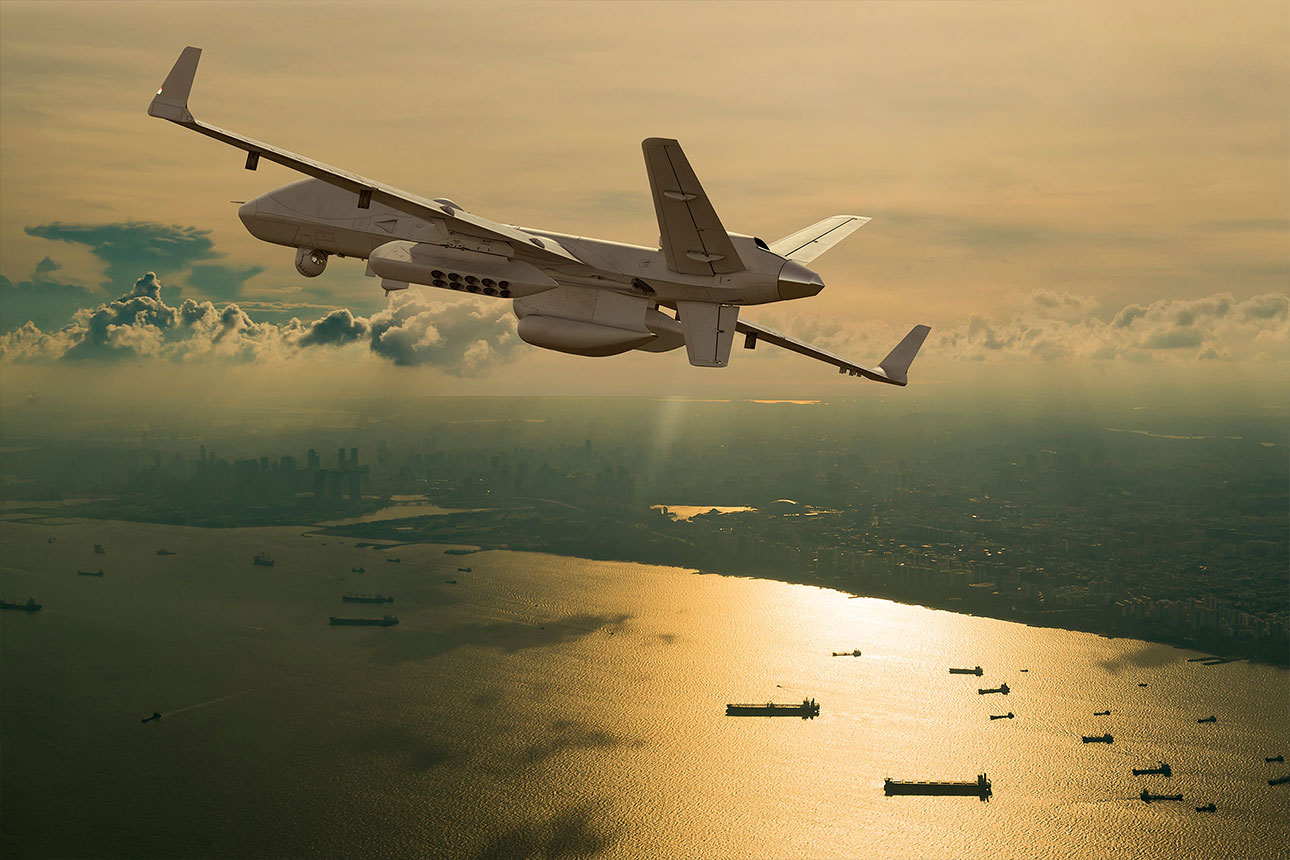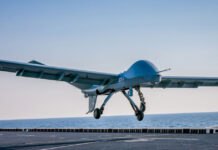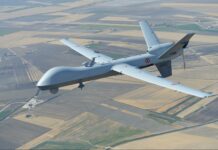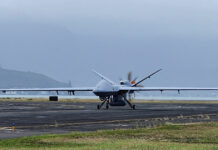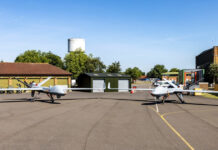The US Navy’s (USN’s) Group Sail Exercise, held in Hawaiian military operating areas from 12-17 April 2023, featured a General Atomics Aeronautical Systems Inc (GA-ASI) MQ-9B SeaGuardian unmanned aerial vehicle (UAV), GA-ASI announced on 25 April.
During the exercise, which supported USN Carrier Strike Groups 1 and 15, the SeaGuardian conducted tasks related to maritime intelligence, surveillance and reconnaissance (MISR), anti-submarine warfare (ASW), long-range fires, and simulated battle damage assessment (BDA).
The SeaGuardian integrated with USN ships (carriers, cruisers, and destroyers) as well as air platforms (F-35C, F/A-18, EA-18G, E-2D, MH-60, and P-8 aircraft) to support various naval missions, including maritime domain awareness, surface warfare, information warfare, and numerous time-sensitive targeting objectives and simulated BDAs.
“We were thrilled that the US Navy requested SeaGuardian be part of the Group Sail training event,” GA-ASI President David R Alexander was quoted as saying in a company press release. “We know the many successes of SeaGuardian during the USN’s RIMPAC [Rim of the Pacific] 2022 exercise was a big reason the SeaGuardian was invited back to Hawaii to support Group Sail.”
In addition to its contributions during Group Sail, the SeaGuardian self-deployed from GA-ASI’s Desert Horizons flight operations facility in El Mirage, California, to Marine Corps Base Hawaii, covering over 2,500 nautical miles in a single flight to demonstrate the SeaGuardian’s expeditionary attributes. The UAV then self-deployed back to El Mirage following the exercise.
GA-ASI describes the MQ-9B SeaGuardian as “a maritime-focused sibling of the revolutionary SkyGuardian remotely piloted aircraft system (RPAS) that has been missionized using ‘bolt-on/bolt-off’ maritime sensors”. It is designed to fly over the horizon via satellite for over 30 hours (depending on configuration) in all types of weather and safely integrate into civil airspace, enabling joint forces and civil authorities to deliver real-time situational awareness.
GA-ASI states that the SeaGuardian “not only integrates the most advanced maritime intelligence, surveillance, and reconnaissance (ISR) capabilities, but it is also the first RPAS in its class to enable real-time search and patrol above and below the ocean’s surface”.
Explaining how SeaGuardian’s performance at RIMPAC 22 positioned it well for the USN to request its presence at April’s Group Sail Exercise, GA-ASI spokesman C Mark Brinkley told ESD, “At RIMPAC 22 SeaGuardian performed key roles including multi-domain Intelligence, surveillance, reconnaissance and targeting (ISR&T) and anti-submarine warfare (ASW) using internal payloads that were able to search the ocean surface and the depths in support of fleet operations.
He added that SeaGuardian “also provided real-time ISR data feeds to the US Pacific Fleet Command Center using signals intelligence parametrics and full-motion video to the watch floor and intelligence centers for real-time, dynamic tasking.
“SeaGuardian’s multi-domain capabilities allow it to flex from mission to mission and pass real-time sensor data directly to the Fleet through Link 16 and satellite feeds to the shore-based command and intelligence centers,” said Brinkley. “During [Group Sail] the MQ-9B effectively built on the lessons learned from RIMPAC to better employ unmanned technology in advanced warfighter scenarios to develop manned-unmanned teaming concepts of operations.”
Peter Felstead



